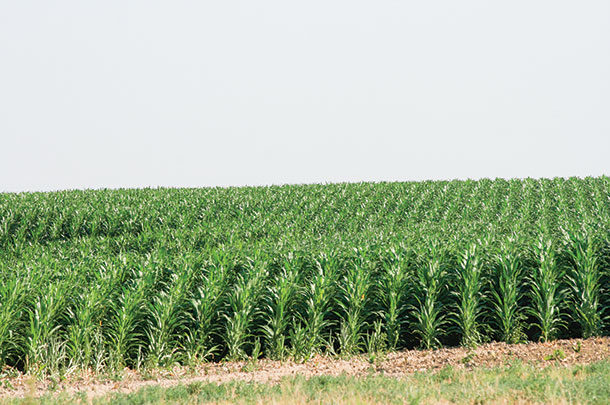The sun is setting on your last day of harvest, everything is either in the silo or covered in the bunk, and now it is time to determine how successful your cropping year has been. One of the large hurdles to overcome is assigning an accurate value to any homegrown forages.
Use a constant dry matter percentage for your calculations
When assigning prices for forages other than corn silage, it is best to base your values on a dry matter (DM) ton. By using a price per DM ton, you eliminate any variations on harvesting that might occur in a cutting.
For corn silage, the rule of thumb is to base your values off a 35% DM ton. Like with using DM tons in other forages, this brings all the corn silage to a consistent level.
Use the same DM percentage throughout all of your inventory tracking as well. For example: If you value your haylage on a DM ton, track your haylage inventory by DM tons. Too often, a miscalculation on a balance sheet is due to using a price per DM ton value over the wet tons of the forage on the pile.
Total tons, DM tons and quality of harvested crops
The first step of getting an accurate value of your harvested crops is to determine how much and the quality of what was harvested.
In a perfect world, every load off the fields should be weighted and tested for quality. This does pose some issues for many farms.
If you do not have access to a scale to weigh every load, the next best thing is to know the average weight each wagon or trailer can hold and then keep a tally of how many loads each wagon or trailer delivered from the fields and multiply that out by the average tons they can hold.
Testing every load can be costly. The next best thing is to take a sample from every load and commingle them for testing.
Some tips for collecting good data from the fields:
- Tally all the loads from each field.
- Test each field for quality and DM.
- Do not commingle samples from different fields.
- Develop a protocol that works for your farm for sampling and reporting – then be consistent.
Understand your true cost to grow the crop
Once you know how much your fields yielded, the next step is to understand the true cost of your forage. For this, you will need to capture and calculate the total costs of growing that crop. There are the obvious costs associated with the crop:
- Seed
- Fertilizer
- Chemicals
- Planting cost
- Harvest cost
But do not forget about those other costs associated with the crop:
- Land rent
If you rent land, this cost should be included in the total cost of the forage. The easiest way to assign the land rent cost to the crop is to total all your land rent for the year. Once you know the percentage land in each crop, assign the land rent by that percentage to each crop (Table 1).

- Maintenance cost
Often, all repairs and maintenance to equipment is all lumped into a single account and treated as an expense to the dairy side of the operation. In truth, any of the equipment and machinery dedicated to cropping should be accounted for in a separate account and assigned to growing the crops.
For pieces used part time in crops and part time on the dairy, it is best to determine the percentage of time used for each on an annual basis. Use that percentage to assign any repairs or maintenance to crops.
Use the same principle for land rent for allocating maintenance costs to the different crops unless the piece of equipment is specific to one crop.
- Shrink
Shrink is harder to calculate. So many variables can happen on-farm and during harvest to add to the amount of shrink. It is all right to use some averages when first starting to calculate shrink and then move to your farm’s numbers as you gain confidence in them.
- Labor
Much like maintenance, too often labor is a single account that has all the wages for the whole farm. If an employee is dedicated to cropping, their entire wage package (wages, benefits, payroll taxes, etc.) should be assigned to cropping. If they have several roles on the farm, then, like the other accounts, determine the percentage of time they are in cropping and assign their wages accordingly.
Establishing your value of the forage
Once you have your expense and total yields per crop, it is simple math to divide the total expenses by the total yield and you have the price per DM ton.
You also have the option of pricing your forage on the pile or in the silo with market value or with a calculation based on quality. This could be advantageous if you are building your equity position and the market or quality value is higher than your cost of production. If you do choose to do this, you will need to offset the difference in an unrealized gain on crop account. If this is something new for you, please consult with your financial adviser or accountant on the proper way to account for this transaction in your accounting system.
Know your numbers
Like so many aspects of your farm, the bottom line is: You must have confidence in your numbers. If you are first getting started, reach out to others and get a feel of what the average is for your area and use that for your first year. As you gain data, you will be able to fine-tune your process and hone in on the true cost and value of your homegrown forages.





